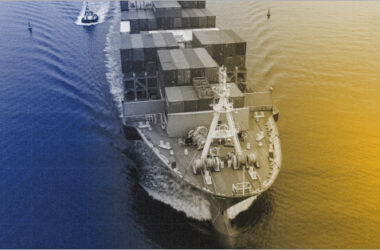In this article, we will explore what voyage deviation is and why it is important in marine insurance. We will discuss the various factors that can lead to deviation, the impact it can have on insurance coverage, and the steps that can be taken to minimize the risks. By the end of the article, readers will have a clear understanding of this important concept and how it can affect their marine insurance policies.
Understanding Voyage Deviation
Voyage deviation is a term used in Marine Insurance to describe a situation where the ship deviates from its original route or voyage plan. This deviation can occur due to various reasons, such as weather conditions, mechanical problems, or changes in cargo requirements.
When a ship deviates from its original route, it can have significant implications for insurance coverage. The marine insurance policy typically covers the ship and its cargo for a specific voyage, and any deviation from this voyage can result in the policy becoming void or limited. Most Marine Insurance policies include a warranty of seaworthiness, which requires the vessel to be in a seaworthy condition at the start of the voyage and to remain so throughout the journey. If the ship deviates from its planned course, it may be considered unseaworthy, and the insurer may deny coverage for any losses that occur as a result.
Therefore, it is important for shipowners to understand the implications of voyage deviation and to take steps to mitigate the risks associated with it. It is also essential to note that voyage deviation can also impact the ship’s liability for any damages or losses that occur during the deviation. If the deviation is deemed to be unreasonable or unnecessary, the shipowner or operator may be held liable for any resulting damages or losses.
To avoid untoward situations, the ship owner or operator must inform the insurer of any planned deviation before it occurs. The insurer will then assess the risks associated with the deviation and may issue an endorsement to the policy to cover the additional risks.
Types of Voyage Deviation
Marine insurance policies typically cover the insured vessel’s voyage from one point to another, and any deviation from that voyage may affect the coverage. There are two types of voyage deviation, which are discussed below.
1. Inherent Deviation
The inherent deviation is a deviation caused by circumstances that are beyond the control of the shipowner or the master of the vessel. These circumstances may include adverse weather conditions, navigational hazards, or other unforeseen events that require the vessel to deviate from its intended course. The inherent deviation is typically covered by marine insurance policies, provided that the deviation was necessary and reasonable under the circumstances.
2. Voluntary Deviation
Voluntary deviation is a deviation caused by the shipowner or the master of the vessel, without any valid reason. For example, if the master decides to take a detour to visit a port that is not on the vessel’s itinerary, this would be considered a voluntary deviation. Voluntary deviation is not covered by marine insurance policies, and the insurer may deny coverage for any losses that occur as a result of such a deviation.
It is important for shipowners and masters to understand the difference between inherent and voluntary deviation, and to ensure that any deviations from the vessel’s intended course are necessary and reasonable under the circumstances. Failure to do so may result in a denial of coverage by the insurer.
Legal Aspects of Voyage Deviation
Voyage deviation is a common occurrence in marine insurance, and it is essential to understand its legal aspects. In this section, we will explore the legal implications of voyage deviation.
When a ship deviates from its intended course, it may impact the coverage provided by the marine insurance policy. The policy may cover the deviation, or it may not. If the policy does not cover the deviation, the shipowner may be liable for any losses incurred.
The legal implications of voyage deviation depend on several factors, including the reason for the deviation, the terms of the insurance policy, and the applicable laws and regulations. In general, voyage deviation is permissible if it is for the safety of the crew, the ship, or the cargo. However, if the deviation is for the benefit of the shipowner or the cargo owner, it may not be covered by the insurance policy.
If the deviation is covered by the policy, the shipowner may need to provide notice to the insurer and obtain permission before deviating from the intended course. Failure to do so may result in the policy not covering any losses incurred during the deviation. Furthermore, the shipowner may be required to pay additional premiums for the extended coverage provided by the policy during the deviation.
Voyage deviation can have significant legal implications for marine insurance. It is essential to understand the terms of the policy, the applicable laws and regulations, and the reason for the deviation to ensure that the shipowner is adequately covered and does not incur any liability.
Implications of Voyage Deviation in Marine Insurance
When a ship deviates from its intended voyage, it can have significant implications for marine insurance policies. One of the primary implications of deviation is that it can void certain clauses in the marine insurance policy. For example, if the policy includes a warranty that the ship will sail on a specific route, any deviation from that route could result in a breach of the warranty and void the policy.
Another implication is that deviation can increase the risk of loss or damage to the cargo. If the ship deviates into an area where there is a higher risk of piracy or other hazards, the cargo may be at greater risk. This increased risk could result in higher insurance premiums or a denial of coverage altogether. In addition, a deviation can impact the liability of the carrier. If the deviation causes damage to the cargo, the carrier may be held liable for the damage. However, if the deviation was necessary for the safety of the ship or cargo, the carrier may not be held liable.
Overall, shipowners and carriers need to understand the implications of deviation on their marine insurance policies. They should carefully review their policies and consult with their insurance providers to ensure that they are adequately covered and understand the risks involved.
How Insurers Handle Voyage Deviation
When a vessel deviates from its intended voyage, it can create significant risks and uncertainties for both the shipowner and the insurer. The insurer will need to assess the impact of the deviation on the risk profile of the vessel and determine whether any additional premiums are required to cover the increased risk.
In general, insurers will handle voyage deviation in one of two ways: either by allowing the deviation and adjusting the policy accordingly, or by requiring the shipowner to obtain permission before deviating from the intended voyage.
If the insurer allows the deviation, the policy will typically be adjusted to reflect the new voyage route and any additional risks that may be associated with it. The insurer may also require the shipowner to provide regular updates on the vessel’s location and status to ensure that it remains within the agreed-upon limits. If the insurer requires permission before deviating from the intended voyage, the shipowner will need to obtain approval before making any changes to the vessel’s route. The insurer may also require the shipowner to pay an additional premium to cover the increased risk associated with the deviation.
In either case, the shipowner and insurer will need to work closely together to ensure that the vessel remains adequately insured and that any risks associated with the deviation are properly managed. This may involve additional inspections, surveys, or other measures to ensure that the vessel remains seaworthy and fit for purpose.
Overall, voyage deviation can create significant challenges for both shipowners and insurers, but by working together and taking appropriate measures to manage the risks, it is possible to ensure that vessels remain safe and adequately insured throughout their voyages.
Preventing and Managing Voyage Deviation
To prevent voyage deviation, marine insurers recommend that shipowners and operators establish clear policies and procedures for managing deviations. These policies should include a clear definition of voyage deviation, as well as guidelines for how to respond to deviations when they occur.
One key strategy for preventing voyage deviation is to use advanced navigation technology and weather forecasting tools. By monitoring weather patterns and sea conditions in real-time, ship operators can make informed decisions about when to adjust course or slow down to avoid adverse conditions. In addition, shipowners and operators can take steps to minimize the risk of human error, such as providing crew members with training and resources to help them navigate safely and accurately. This may include providing access to up-to-date nautical charts, GPS systems, and other navigation tools.
If a deviation does occur, shipowners and operators need to take immediate action to manage the situation. This may include notifying the insurer and other relevant parties, such as port authorities and cargo owners, to ensure that the necessary steps are taken to minimize the impact of the deviation.
To manage the financial risks associated with voyage deviation, shipowners and operators may also consider purchasing voyage deviation endorsement coverage in Marine Insurance. This type of coverage can protect the insured from losses or damages that occur as a result of a deviation, including costs associated with rerouting the vessel, delays in delivery, and other related expenses.
Case Studies of Voyage Deviation
Voyage deviation is a significant concern for marine insurance companies. Here are some case studies that illustrate how voyage deviation can impact marine insurance:
Case Study 1: The Unplanned Stop
A cargo ship was traveling from China to the United States when it encountered severe weather conditions. The captain decided to make an unplanned stop in Japan to wait out the storm. Although the stop was necessary for the safety of the crew and cargo, it was considered a deviation from the original voyage plan. As a result, the ship’s insurance policy was voided, and the shipowner had to pay for any damages or losses out of pocket.
Case Study 2: The Delayed Arrival
A container ship was scheduled to arrive at its destination port on a specific date. However, due to engine problems, the ship experienced a delay and arrived two weeks later than planned. The delay was considered a deviation from the original voyage plan, and the insurance company refused to cover any losses or damages that occurred during the extended voyage.
Case Study 3: The Unauthorized Route
A tanker ship was transporting oil from the Middle East to Europe when the captain decided to take an unauthorized route through a dangerous area. The ship was attacked by pirates, and the cargo was stolen. The insurance company refused to pay for the loss because the captain had deviated from the original voyage plan without authorization.
What is a Voyage Policy in Marine Insurance?
A Voyage Policy is Marine Insurance coverage for risks to a ship’s cargo during a specific voyage. Unlike most insurance policies it is not time-based but expires when the ship arrives at its destination. It covers only the cargo, not the ship that carries it. A Voyage Policy is also known as Marine Cargo Insurance.
Conclusion
Voyage deviation is a crucial concept in marine insurance and plays a significant role in the protection of ships, carriers, and cargo. It refers to any intentional deviation from the originally planned route, and it must be carefully considered and disclosed to the insurer to ensure coverage remains in effect. Understanding voyage deviation is essential for both shipowners and cargo owners to navigate the complex waters of marine insurance and ensure their assets are adequately protected. By adhering to the terms and conditions of their insurance policies, maritime stakeholders can minimize the financial risks associated with unforeseen diversions and maintain the integrity of their marine operations.








